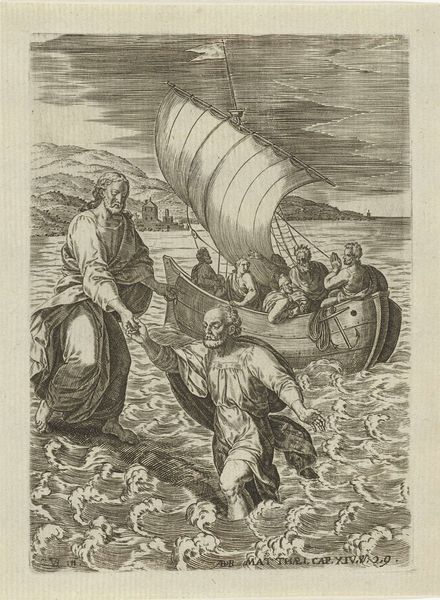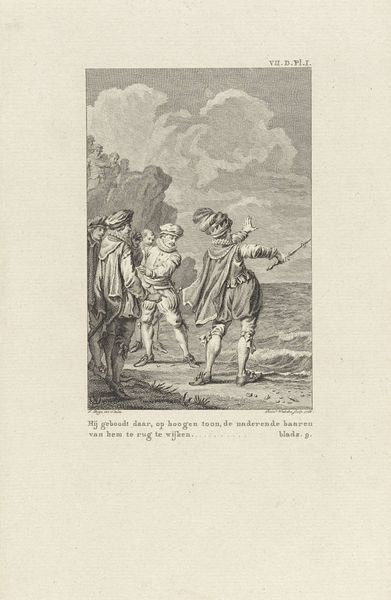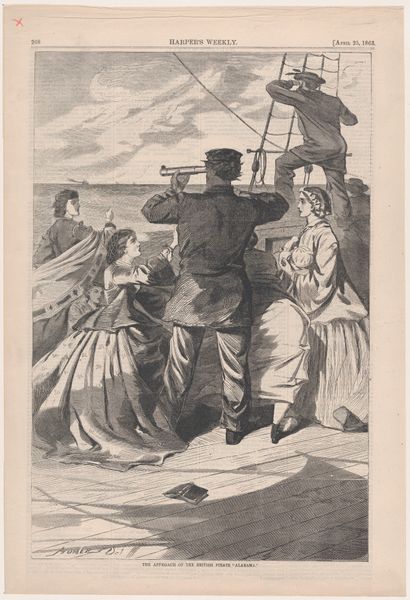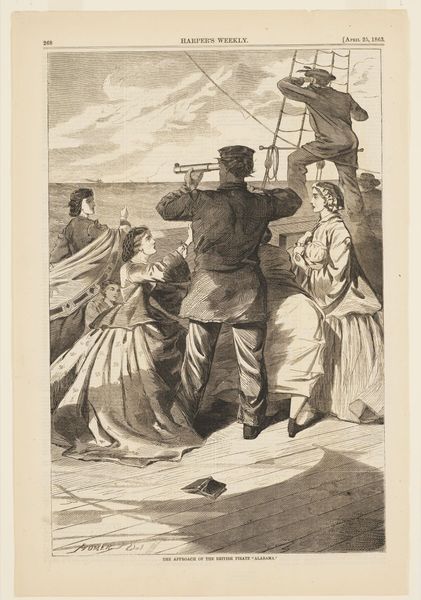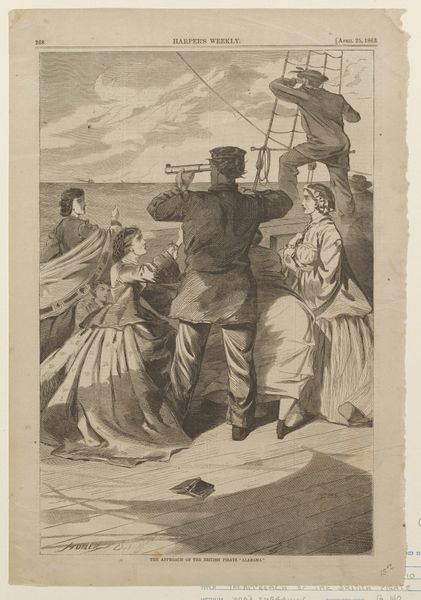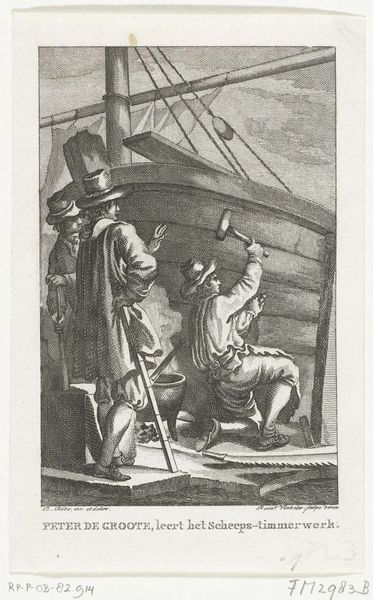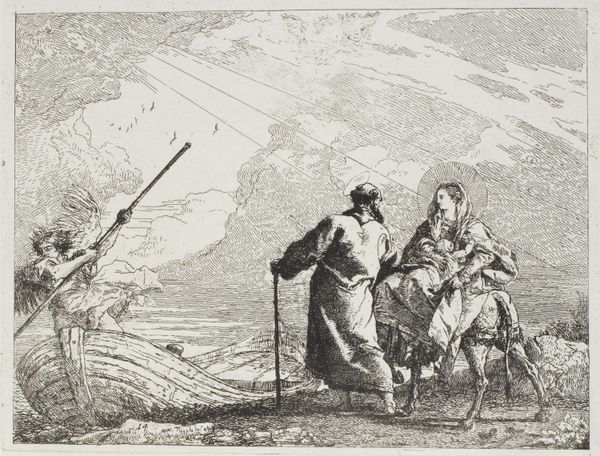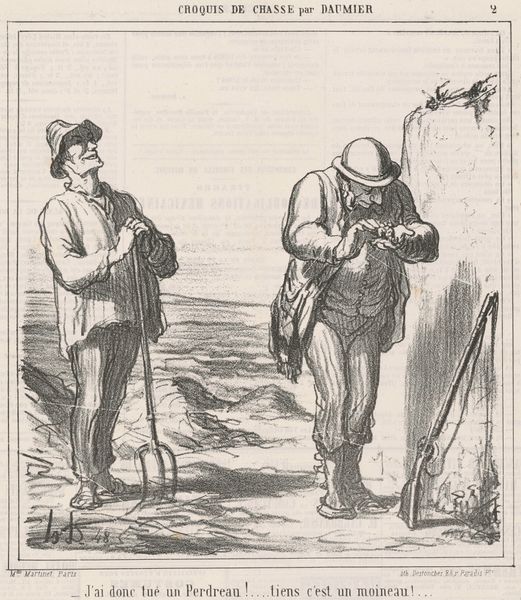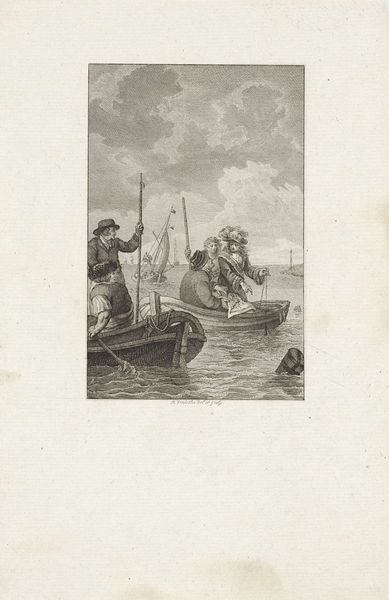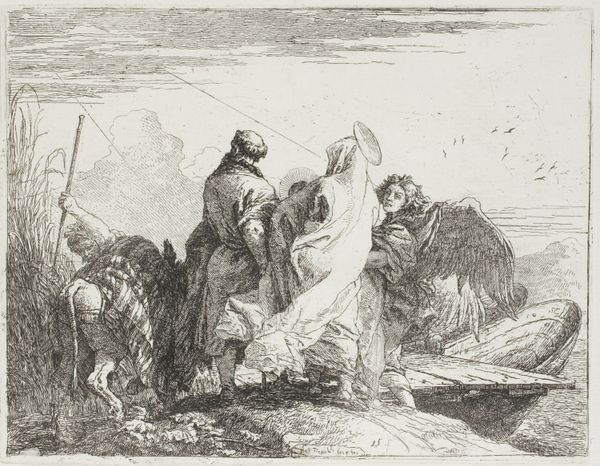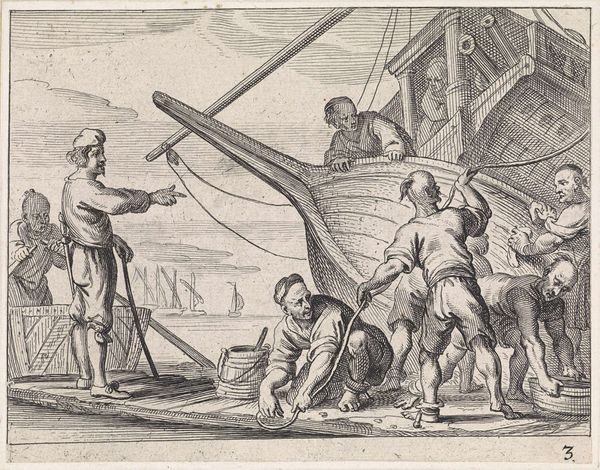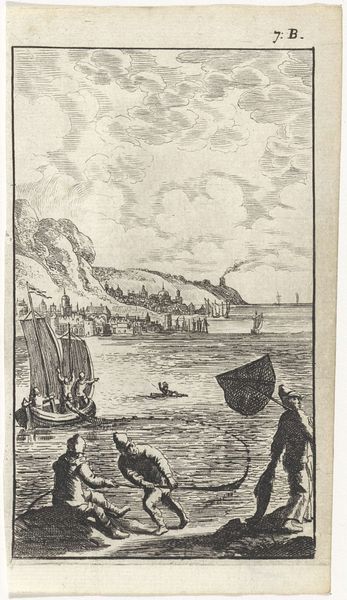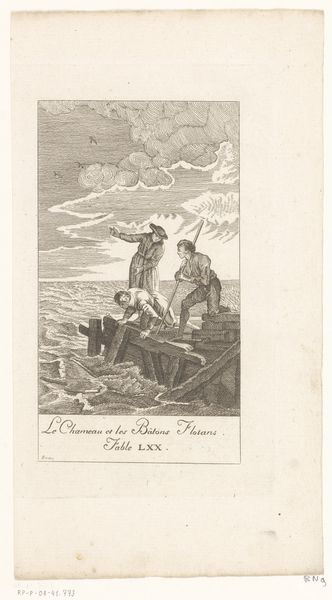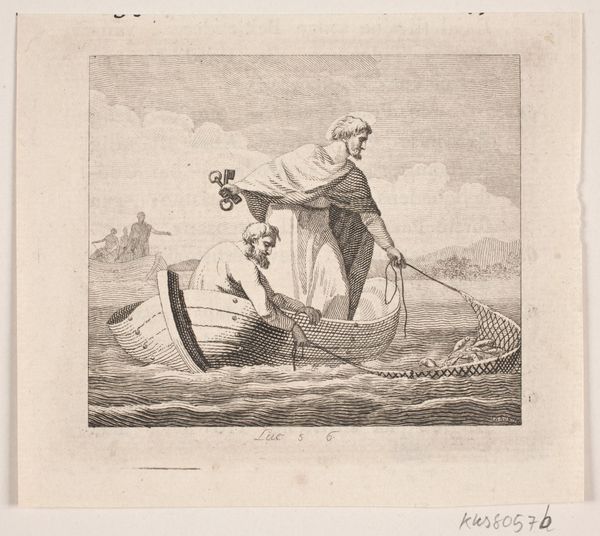
print, engraving
#
baroque
# print
#
old engraving style
#
landscape
#
personal sketchbook
#
genre-painting
#
engraving
#
sea
Dimensions: height 270 mm, width 199 mm
Copyright: Rijks Museum: Open Domain
Curator: This is "Three Fishermen on the Coast," an engraving by Jacques Philippe Le Bas, created in 1747. It's currently housed in the Rijksmuseum. Editor: It's got a stark, almost desperate quality. The monochromatic palette emphasizes the harsh conditions – a relentless sea and a blustery sky. Curator: As an engraving, Le Bas employed meticulous techniques to capture light and texture, didn't he? Notice the varied line weights and cross-hatching; these render both the roughness of the sea and the garments worn by the fishermen. I'm struck by how the material choices – the metal plate, the ink – directly informed the aesthetic of this piece and its mass reproducibility, bringing images like this to a wider audience. Editor: And thinking about that audience, the subject matter speaks to the working class, really centering them within this landscape. But what kind of agency or mobility did those figures actually possess in the 18th century economy? Their identities are closely tied to the means and results of their labor. This piece might be picturesque, but that does not soften their lives, nor excuse a top-down perspective. Curator: It underscores, in a way, the entanglement between labor and material existence. Consider, too, how printmaking, unlike unique paintings, facilitated the democratization of art consumption. Each print served to validate and circulate this portrayal of maritime labor and those that were dependent on the sea. Editor: That mass appeal normalizes their depiction in relation to nature and labor itself. So it demands a deeper interrogation: whose gaze are we really adopting? And what narratives are perpetuated or disrupted within this seemingly simple scene of everyday labor? The engraving makes us examine those social roles and inequalities implicit in depictions of labor and land. Curator: Absolutely. Reflecting on Le Bas’ process allows us to see this not only as an image, but as a tangible object born from distinct technical choices and a specific mode of production, each copy impacting the landscape and artistic landscape. Editor: Yes, understanding these sociohistorical influences empowers us to unpack the complex relationships among individuals, society, and artistic representation.
Comments
No comments
Be the first to comment and join the conversation on the ultimate creative platform.
